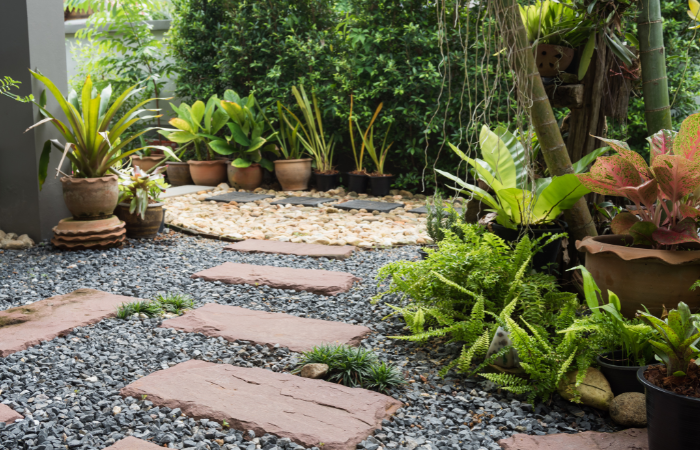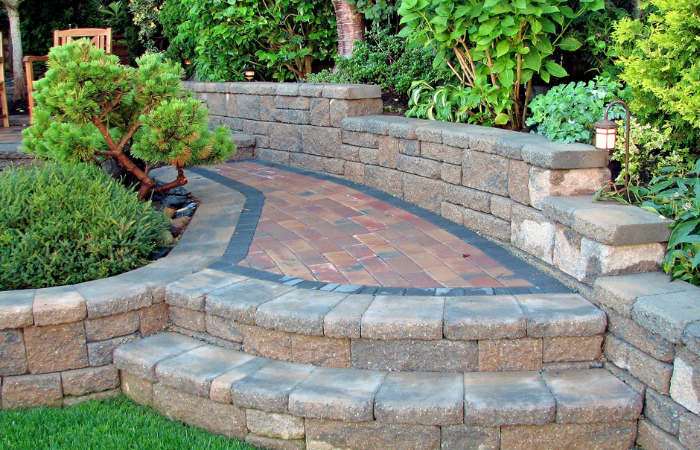Transforming your outdoor setting doesn’t have to break the bank. This article explores practical strategies and creative concepts for cost-effective hardscaping, turning your backyard into a stylish haven without emptying your wallet. Discover simple yet impactful tips on selecting budget-friendly materials, optimizing space, and DIY projects that add charm without compromising on quality.
Whether you’re a seasoned gardener or a novice, these practical ideas will guide you through the process, helping you achieve a visually stunning and functional outdoor space without the hefty price tag. It’s time to elevate your surroundings affordably.
Is Cost-Effective Hardscaping Possible?
Yes, cost-effective hardscaping is possible by smart planning and material choices. Opt for budget-friendly materials like gravel or concrete pavers, and plan the layout efficiently to minimize waste. DIY projects or hiring local professionals can also reduce labor costs. Consider recycled materials for environmentally friendly and economical options. Regular maintenance and thoughtful design can ensure long-term cost savings.
Cost-Effective Hardscaping Tips and Ideas When You’re On a Budget
Hardscaping, which involves the non-living elements in your outdoor space, such as pathways, patios, and walls, can immensely enhance the aesthetics and functionality of your property. If you’re on a budget, here are some cost-effective hardscaping tips and ideas to consider:
1. Gravel Paths and Patios
Gravel is an affordable alternative for pathways and patios. Its installation is relatively straightforward, and it provides good drainage. To enhance stability, consider using edging to contain the gravel. This creates a charming rustic look while staying within budget.
2. Mulch Beds with Stone Borders
Use mulch for garden beds, which is cost-effective and helps with moisture retention. Define the borders with inexpensive stones or pavers. This combination not only looks appealing but also aids in weed control, minimizing maintenance costs.
3. Concrete Pavers for Walkways
Opt for concrete pavers instead of natural stone for walkways. Concrete pavers are durable, versatile, and more budget-friendly. Arrange them in a visually appealing pattern to add a trace of creativity to your outdoor space without breaking the bank.
4. Vertical Gardening with Pallets
Repurpose wooden pallets as vertical garden structures. This budget-friendly solution adds greenery to your hardscape while maximizing space. Attach pots or planters to the pallet’s slats, creating a unique and functional vertical garden. It’s an innovative way to introduce plant life without extensive landscaping costs.
5. Stamped Concrete Surfaces
Mimic the look of more expensive materials like stone or brick with stamped concrete. This technique involves imprinting patterns onto freshly poured concrete. Stamped concrete can replicate various textures and designs, providing an economical way to achieve a high-end appearance for driveways, patios, or pathways.
6. Recycled Materials for Edging
Utilize recycled materials for edging, such as old bottles or salvaged bricks. These can serve as effective and budget-friendly borders for flower beds or pathways. This approach reduces waste and adds a unique and eclectic touch to your hardscape design.
7. DIY Fire Pit
Create a budget-friendly fire pit using affordable materials like concrete blocks or retaining wall stones. With proper planning and minimal construction skills, you can make a functional and stylish fire pit. This DIY approach allows you to enjoy outdoor gatherings without the expense of a professionally installed fire feature.
8. Artificial Turf for Low-Maintenance Lawns
Replace traditional lawns with artificial turf to reduce maintenance costs. Artificial grass requires minimal care, eliminating the need for watering, mowing, and fertilizing. It provides a lush, green appearance year-round, contributing to a neat and well-kept hardscape without the ongoing expenses associated with natural grass.
Frequently Asked Questions

What is the purpose of hardscaping?
Hardscaping transforms uneven yards into functional spaces with tiered patios, retaining walls, walkways, and stairs. It addresses erosion issues, providing stability and preventing soil loss. Ideal for sloping grades, hardscaping enhances outdoor usability while maintaining the landscape’s integrity.
Which is an example of a hardscape?
Hardscapes encompass various custom-built features for outdoor living spaces, such as patios, walkways, walls, water features, fire pits, lighting, grill surrounds, and pergolas. These elements contribute to the functional and aesthetic aspects of outdoor environments, enhancing the overall design and usability of the space.
What time of year is best for hardscaping?
Fall and winter are ideal for hardscaping projects, allowing for optimal timing. Constructing hardscapes during these seasons ensures completion by spring, enabling you to enjoy the transformed outdoor space as the weather improves. The cooler temperatures and reduced demand for contractors also make fall and winter opportune times for starting hardscaping endeavors. You may also consider consulting with the American Society of Landscape Architects (ASLA) for valuable insights and guidance on your hardscaping project.
What is the cheapest hardscaping?
Mulch, shredded leaves, pea gravel, bark, rocks, brick chips, and sand are among the most affordable hardscaping materials. These cost-effective options provide various textures and colors, offering flexibility for creative landscape designs on a budget. Choosing these materials allows for economical hardscape projects while still achieving an attractive and functional outdoor space.
How does hardscape differ from softscape in landscaping?
Hardscape refers to non-living elements in landscaping, such as stone, bricks, concrete, or metal, while softscape encompasses living elements like soil, trees, flowers, grass, and shrubs. Achieving a well-balanced landscape design involves harmoniously integrating both hardscaping and softscaping elements. This combination enhances visual appeal and functionality, creating a cohesive and attractive outdoor environment.
Conclusion
It is undeniable that creating a stylish outdoor space doesn’t have to strain your budget. By choosing budget-friendly materials like gravel and concrete pavers, exploring creative DIY projects, and incorporating thoughtful design, you can achieve appealing and cost-effective hardscaping. With these tips, your outdoor haven can be both visually stunning and affordable.
If you need an expert for your hardscaping project, contact us at Audet Enterprises. Let our skilled team transform your outdoor space with cost-effective solutions. We offer residential and commercial hardscaping services, ensuring stunning and functional results.


